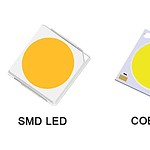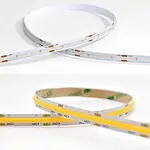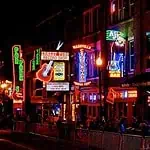LEDs and halogens are currently the two best lighting solutions for users. However, there are many dissimilarities between these two. Understanding the differences between halogen and LEDs is essential. It can help in deciding on the finest illumination solution. It’s not a simple task at all to select a perfect illuminator. The consumer needs to be selective to ensure the best lighting consideration. Halogen and LEDs are the best available lighting solutions. They are useful illuminators to decorate an occasion. They functioned as trade display lighting or illuminating a house.
LEDs are much more energy-efficient (80% more) than halogen bulbs. LEDs are costlier than halogens. They can save energy and prevent routine lamp replacement expenses as well. Moreover, they’re shatterproof. Unlike halogens, LEDs are cooler to skin contact after use and don’t emit harmful UV rays.
Take a look at this article to learn the differences between halogen and LEDs. You will learn their pros and cons, features’ differences, and functions.
Features Of Halogen & LED
Check out the features of both LEDs and halogens from the sections below:
Features Of Halogens
- Halogen bulbs can endure up to 2,000 hours. This is twice the enduring capacity of incandescent bulbs but less than LEDs.
- Halogen bulbs deliver infrared light, which can impair artwork and fabrics.
- Halogen bulbs get hot while illuminating. Avoid touching the outer glass with bare hands until it cools down.
- Halogens generate heat, which forces the air conditioner to work harder.
- Halogen bulbs are breakable. Their sheer filament and vibration can decrease their lifespan.
Features Of LEDs
- LEDs can endure up to 25,000 hours, while LED tubes usually range up to 50,000 hours of endurance.
- LEDs can operate with around 80% percent decreased energy than halogen bulbs.
- LEDs are costlier, but they can make up for their price over time. They preserve energy and limit the chances of bulb replacements.
- LEDs come with a shatterproof outer cover.
- LEDs are cooler to the skin contact after use (though caution is advisable).
- LEDs come in different colors and color temperatures.
- LEDs don’t contain any harmful chemicals or gasses.
Pros & Cons Of Halogens
Let’s take a quick look at the advantages and disadvantages of halogen bulbs.
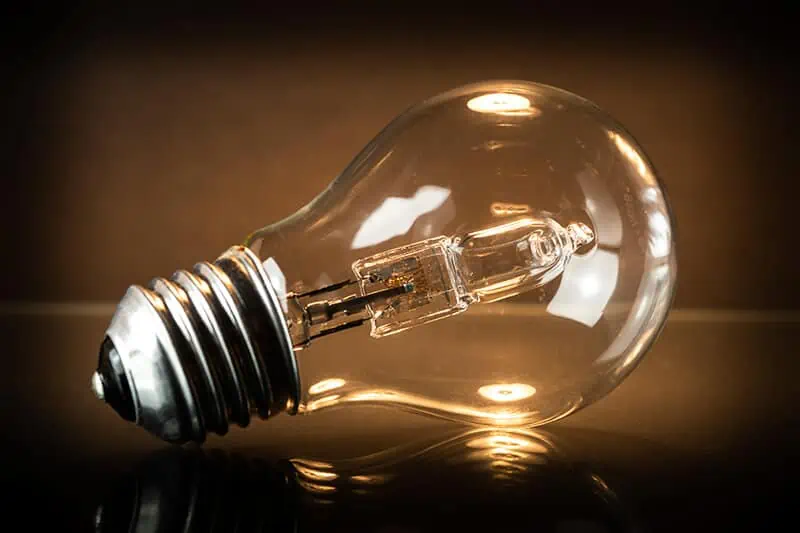
Advantages Of Halogens
- The halogen lamps can emit light that is 30% whiter and shining and is compact.
- Halogens contain tungsten vapors that prevent the glass from darkening. So, its illumination’s intensity will not weaken over time.
- You can extend halogen’s life by using it efficiently.
- It’s available in the market at a low cost.
Disadvantages Of Halogens
- They generate a lot of heat.
- They radiate ultraviolet rays. Therefore, wear gloves when handling them to stay safe.
- Halogen lamps have a short functional life if used continuously for long sessions.
- They easily absorb vibrations in the atmosphere and can break.
Pros & Cons Of LEDs
Let’s check out the pros and cons of LEDs:
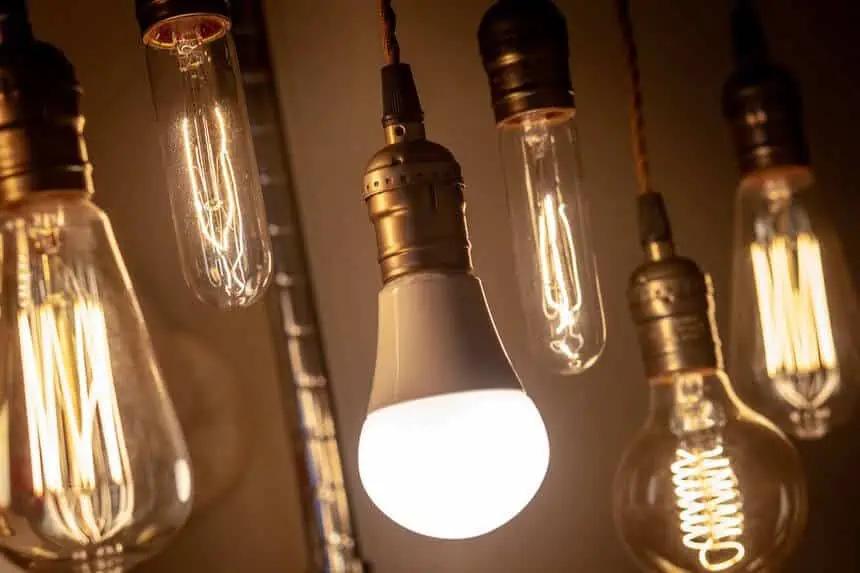
Advantages Of LEDs
- Of all the illumination options, LEDs have the most extended lifespan. Studies reveal the least and greatest enduring capacities of LEDs. They’re 50,000 hours and 100,000 hours, respectively.
- LEDs are energy-efficient. These are 80% more energy-efficient than any other incandescent light. They’re even more energy efficient than CFLs.
- LEDs can produce immediate illumination after switching them on.
- They produce less heat and more light. They can produce 80% light and 20% heat of the total electrical energy they consume.
- The LEDs are good for reading rooms due to the cool light tone.
Disadvantages Of LEDs
- Despite their long lifespan, they’re an expensive investment. Other illuminating sources are much less expensive in a crisis.
- Unfortunately, LEDs don’t go well with dimmers. LED designing technology is undoubtedly advanced. But its dimming feature is yet to improve.
- Even LEDs can overheat if exposed to heat. So you should protect them with a sconce or lampshade in extremely hot environments. Being exposed to heat for a long time can decrease their life span.
- LEDs are directional rather than illuminating in all directions.
Which One Is Better?
Below are some factors in determining which bulb to choose. LEDs and halogens are compared on various basis in this section.
Heat Emission
The heat emission capacity of LEDs is way less than halogens. LEDs can emit 10% to 20% heat of total energy, whereas halogen bulbs emit 80% to 90% heat of total energy.
Power Consumption
LEDs are more power efficient than halogens. An 8-watt LED is said to be equivalent to a 90-watt halogen. This means that an LED is about 10x-12x more power efficient.
Average Lifespan
The average lifespan of LEDs is more than halogens. It can endure up to 50,000 to 60,000 hours, whereas the lifespan of halogen bulbs is 800 to 1,200 hours.
Average Cost
An LED is costlier than a halogen bulb. The average price of an LED illuminator is $15 to $20, whereas the cost of halogen bulbs is only $3 to $5.
Ultraviolet Emission
UV emissions from the LEDs are nil. Halogens have UV emissions (though the chance is minimal). However, UV emission ain’t harmful to humans. Just avoid touching the glass when the halogen is on or has just been turned off.
More Differences To Consider
The Halogens Vs. LED ain’t over. Below is a condensed list of more differences you should know about.
- You can get LEDs in several colors. The semiconductor inside it decides the emission color. Halogens come only in yellow. LEDs are available in an array of colors. These include red, yellow, golden, white, blue, green, pink, etc.
- The working principles of LEDs and halogens are different. LEDs rely on the electroluminescence principle. Halogens rely on electric current and the heating effect.
- The efficiency range of LEDs is 50 to 100 lumens per watt, and halogens have 22 to 33 lumens per watt efficiency.
- LEDs come in several mounting arrangements with versatile shapes for different requirements. But, halogens can’t have versatile mounting configurations designs due to their technical limitations.
Conclusion
LEDs are evolving as more affordable and better options, and halogen bulbs are losing favor. LEDs are gaining popularity everywhere, and their applications include trade show illumination, lighting a house interior, and more. These lights have boosted lighting technology, which is transforming light sources.
We are a factory specializing in producing high-quality customized LED strips and LED neon lights.
Please contact us if you need to purchase LED lights.
